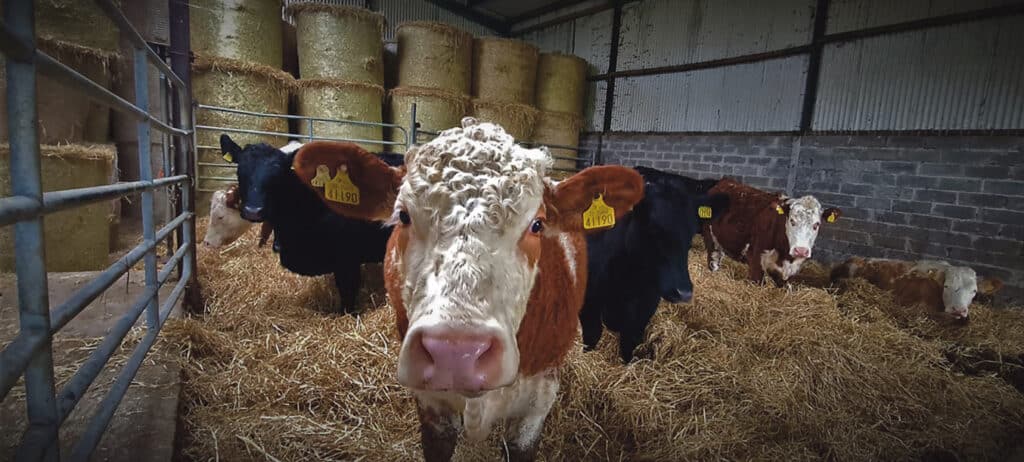Ciarán was born in 352 on Cape Clear Island off the coast of West Cork. His mother was Liadhain who was of the Corcalee tribe of West Cork (the main sept being the O’Driscolls), while his father was Lughaidh of Ossory (Co. Offaly) which was also part of the Corcalee territory at that time.
One starry night Liadhain saw a dazzling light that made her drop to her knees. She had been standing by a pillar stone when the light seemed to enter into her. That same night, her husband, Lughaidh, heard wondrous music from the murmuring sea which made him believe that some enchantment was being cast on them.
The next day they went and asked their druid to explain what had happened. “You will give birth to a marvellous son. Great will be his virtue to the end of time,” said the druid.
On March 5, in the year 352, Ciarán was born. He was an extraordinary baby; all who gazed upon him loved him; birds flew around his head and did what he asked even surrendering their prey.
He grew up happily on Cape Clear until he was about thirty years of age, when he felt compelled to leave home in search of the new religion called Christianity. He travelled as far as Tours and then Rome, studied the scriptures, got baptised and prayed hard for twenty years. In A.D. 382, he was consecrated a bishop. Ciarán then decided to return to Ireland. En route he met St. Patrick and spent a while studying with him. “Go before me to Ireland and find a monastery by a well of fresh spring water,” said Patrick. “How shall I find the well?” asked Ciarán. “Take this bell with you wherever you go. It will ring out when you reach the right place.”
Ciarán returned to Cape Clear, preached Christianity to his own people and, it is believed, celebrated the first Mass that was ever said in Ireland. With his beloved birds still circling overhead, he carved two crosses on a pillar-stone and built a chapel beside the white strand . These are ‘Gallán Chiaráin’ (Ciarán’s standing stone) and ‘Cill Chiaráin’ (Ciarán’s church).
After preaching Christianity all over West Cork he travelled up to the midland counties until he got to Slieve Bloom. There he stopped for a drink by a well when suddenly his bell rang out loudly for all to hear. So he decided to stay in the lovely woods of North Ossory. He made himself a simple mud hut and lived happily as a hermit among the beasts of the forest. The fox, wolf, deer, badger and wild boar, as well as the birds of the air, all became his friends.
In 402, he founded his monastery here in the centre of Ireland, near Careen, County Offaly. Many disciples followed him there to listen to his wise words. After the death of his father, his mother came to join him and Ciarán made Liadhain the first abbess in Ireland. The monastic site Saigher (Seir) became the seat of the bishops of Ossory.
Ciarán’s monastery grew and prospered. He amassed wealth, but wanted no riches for himself. He built a house for over one hundred heifers and kept fifty hard-working horses to bring in his rich harvests. He gave all the produce to the poor. He himself subsisted on one meal a day of barley bread, herbs and carrageen moss, washed down with cool well water. He wore a simple garment of deer skin and slept on a hard rock. Once, when more food was needed for the poor, he told his servant not to go to the market, but to pray and trust in God.
The next day a large sow appeared from nowhere, promptly gave birth to a litter of piglets and provided the monastery with all the pig meat it needed. “We need more sheep. Shall I buy some?” asked the servant. Ciarán answered, “He who brought the pigs will bring the sheep.” That very day, twenty-seven sheep appeared, grazing near the monastery gates. From then on, Ciarán did not speak to anyone except in prayer. He went on to perform many miracles, curing the sick and helping those in need.
On Cape Clear there is much lore about Ciarán. The water from ‘Tobar Chiaráin’ (Ciarán’s well) is believed to have great healing properties. ‘Uisce Chiaráin’ (water from the well) was regarded as a great cure for sea sickness. Island folklore makes frequent mention of people coming to the well on the eve of his feast, March 4. There the people did ‘rounds’ from the Gallán to the well to the church and graveyard. Some people spent much of the night praying and doing the rounds for much of the night. Everybody brought bottles of water from the well; this was blessed at Mass on the morning of the fifth of March.
An island woman, Cáit Ní Shíocháin, wrote a poem about Ciarán which is often recited: It starts; ‘A Chiaráin ghléigheal/A rugadh i gCléire/Is a thug an solas naofa/ chugainn that lear’ (O bright faced Ciarán/who was born in Cléire/and brought the blessed light/across the sea to us)’



